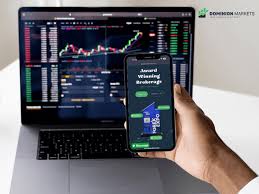
Understanding Margin in Forex Trading: A Comprehensive Guide
In the world of forex trading, margin plays a crucial role in the trading process. It is a fundamental concept that traders must understand to effectively manage their capital and leverage in the forex market. This article will provide you with an in-depth understanding of what margin is, how it works, and its implications for forex traders. If you are looking for an informative guide, you can explore more insights at what is margin in forex trading https://trading-connexion.com/.
What is Margin in Forex?
Margin in forex trading refers to the amount of money that a trader needs to deposit to open and maintain a leveraged position. It serves as a good-faith deposit that ensures that both the trader and the broker are protected against the potential risks involved in trading. The margin is expressed as a percentage of the full position size, allowing traders to control larger positions with a smaller amount of capital.
The Importance of Margin
Understanding margin is essential for any forex trader. It not only impacts how much leverage you can use but also affects your overall risk management strategy. By utilizing margin effectively, traders can amplify their potential returns. However, it is equally critical to recognize that increased leverage also heightens the risk of losses, making margin management pivotal in successful trading strategies.
Types of Margin
In forex trading, two primary types of margins are often discussed: initial margin and maintenance margin.
Initial Margin
The initial margin is the amount of money required to open a new position. This amount is predetermined by the broker and is typically expressed as a percentage of the total trade value. For instance, if a broker requires a 1% margin for a position worth $10,000, the trader needs to deposit $100 to open that position. The initial margin requirement can vary based on factors such as the currency pair being traded and market conditions.
Maintenance Margin
The maintenance margin is the minimum amount of equity that must be maintained in a trading account to keep a position open. If the trader’s account equity falls below this level, the broker may issue a margin call, requiring the trader to deposit additional funds to maintain their positions, or risk having their positions closed out. The maintenance margin helps maintain adequate capital reserves to cover potential losses in open trades.
How Margin is Calculated in Forex Trading
To calculate margin, traders can use the following formula:
Margin = (Trade Size / Leverage)
For instance, if a trader wants to control a position size of $100,000 and uses a leverage of 100:1, the margin required would be:
Margin = ($100,000 / 100) = $1,000
This illustrates that the trader will need to have $1,000 in their trading account to open a position worth $100,000.
Margin Call and Its Consequences
A margin call occurs when a trader’s account equity falls below the maintenance margin requirement set by the broker. When this happens, the broker will notify the trader to either deposit additional funds or close some of their positions to reduce risk exposure. Ignoring a margin call can lead to automatic liquidation of positions, resulting in substantial losses.
Risk Management and Margin
Effective risk management is vital in forex trading, and understanding margin is integral to it. Traders are advised to use leverage wisely and set appropriate stop-loss orders to manage potential losses. Additionally, maintaining a solid understanding of margin requirements helps traders avoid margin calls and ensures they have adequate capital to ride through market fluctuations.
Leverage and Margin: The Connection
Leverage is closely related to margin and is a key concept in forex trading. It allows traders to control larger positions with less capital by borrowing funds from the broker. While leverage can enhance potential profits, it also exposes traders to greater risks. For instance, using a 100:1 leverage means that for every $1 of capital, a trader can control $100 in the market. However, the flipside is that losses can also be amplified, making it crucial to understand and manage leverage and margin effectively.
Conclusion
In conclusion, margin is an essential element of forex trading that traders must understand to succeed in the market. It allows for increased trading potential but comes with inherent risks. By grasping the concepts of initial and maintenance margins, as well as the implications of margin calls and leverage, traders can implement effective risk management strategies.
As with any trading strategy, education and practice are key. Understanding margin and its dynamics can empower traders to make informed decisions and improve their overall trading performance. Whether you are a novice trader or an experienced investor, taking the time to learn about margin will certainly enhance your forex trading journey.
